New use in the 1900s
As leprosy gradually became less prevalent in Norway, there was a lot of spare capacity at this large institution. At some point after 1900, the south wing was rented to the City of Bergen, which had too few places at Lungegården tuberculosis hospital, and was in operation at the neighbouring property from 1898 to 1956. In connection with this, curative facilities were established in the garden so that these patients could lie outside and get fresh air.
The hospital went on to develop a collaboration with schools of nursing, such as Betanien, allowing students to work at the hospital as part of their education.
In 1947, a number of rooms on the first floor of the north wing were also rented to the City for women with venereal disease. These residents did not have access to the courtyard or garden.
The dwindling number of residents with leprosy lived in the north wing. An effective treatment for leprosy was finally found when the sulfone drug Promin was taken into use in 1947. When the hospital was closed and the buildings taken over by the State Rehabilitation Institute in 1957, there were five remaining residents who had had leprosy. They had already spent many years there and wanted to stay. The last one of these residents passed away in 1973.
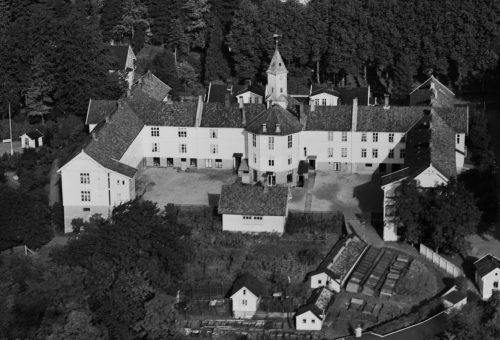
Photo: Widerøe’s Flyveselskap A/S. Detail. The University of Bergen Library.
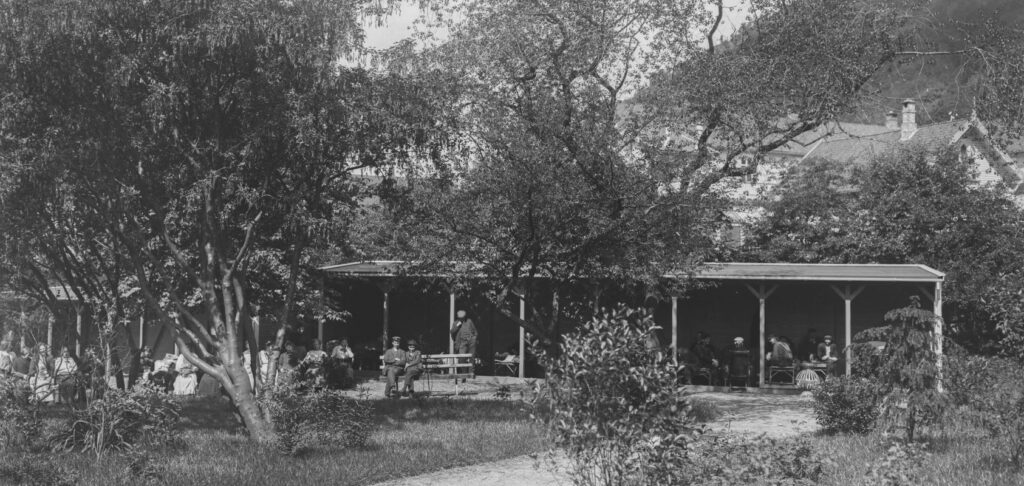
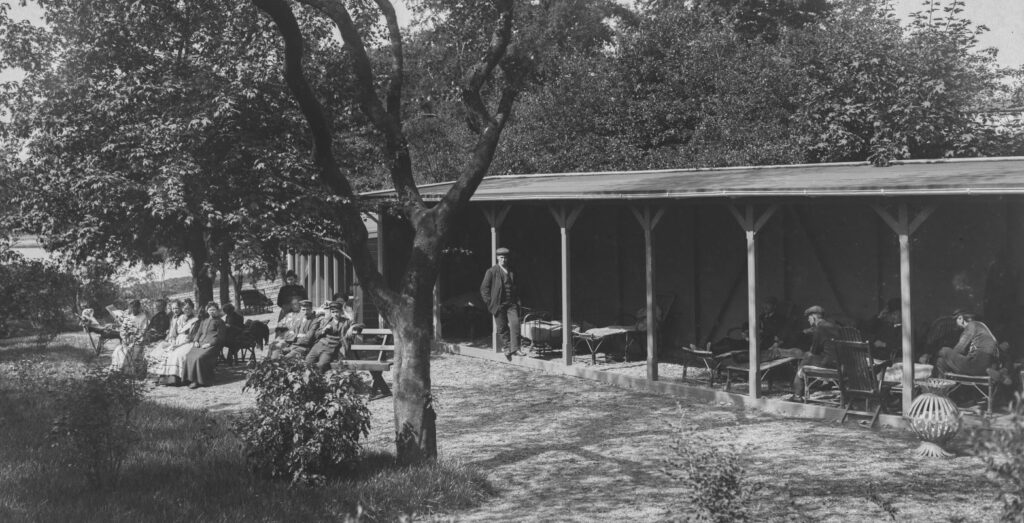
Photo: K. Knudsen & Co. Detail. The University of Bergen Library.
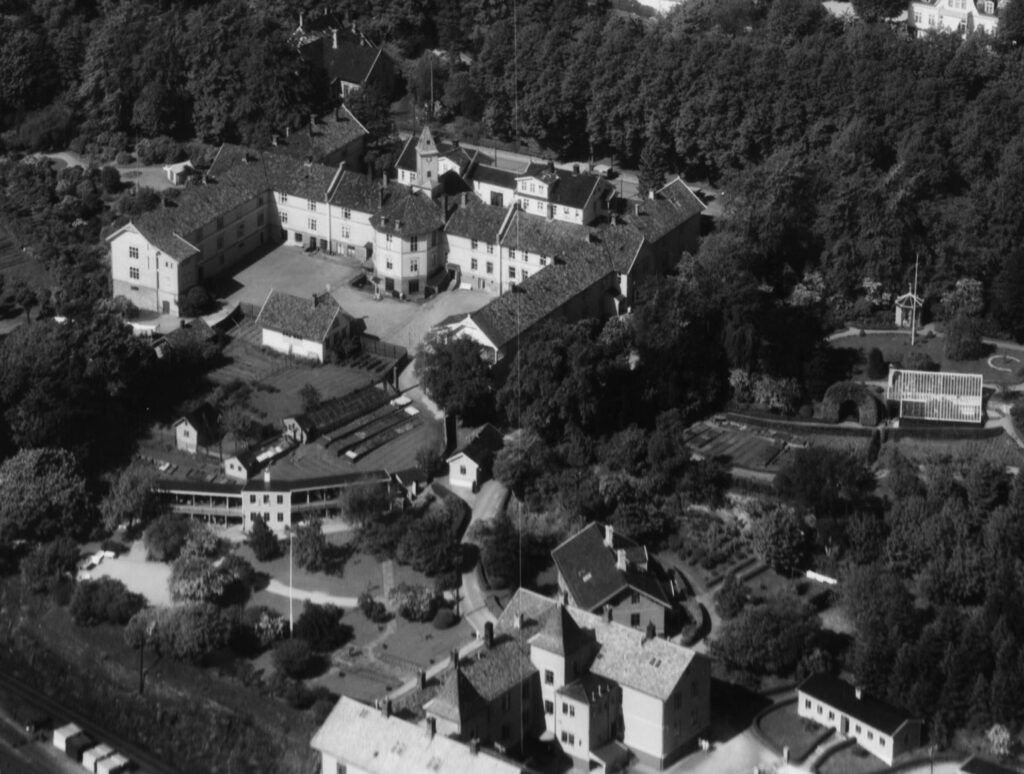
Photo: Widerøe’s Flyveselskap A/S. Detail. The University of Bergen Library.
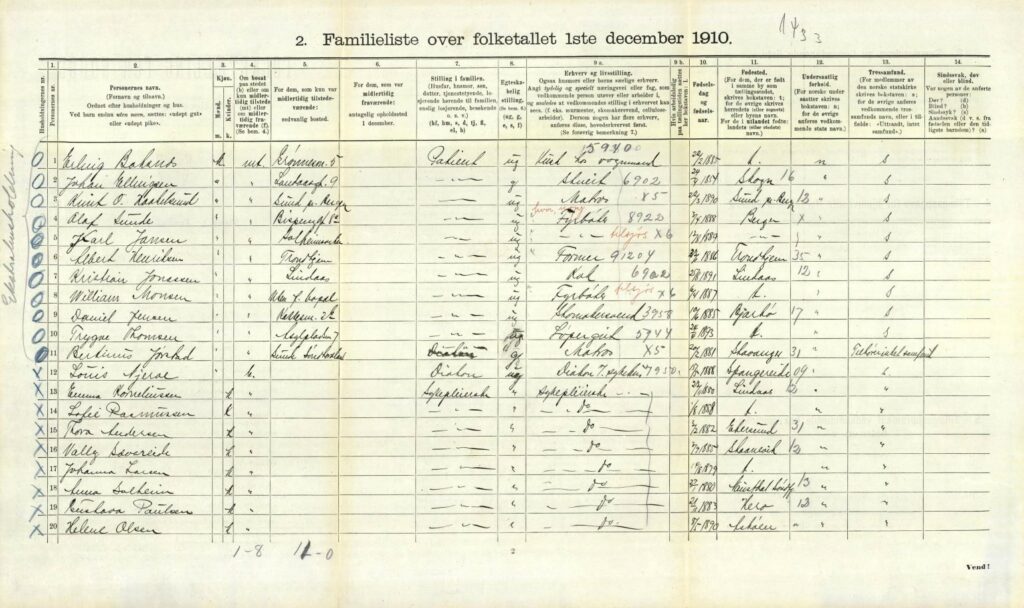
www.digitaltarkivet.no.
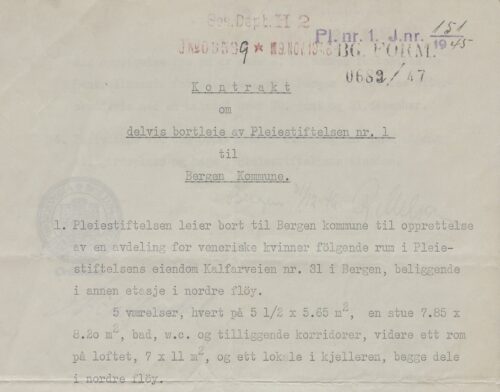
The Regional State Archives of Bergen.



